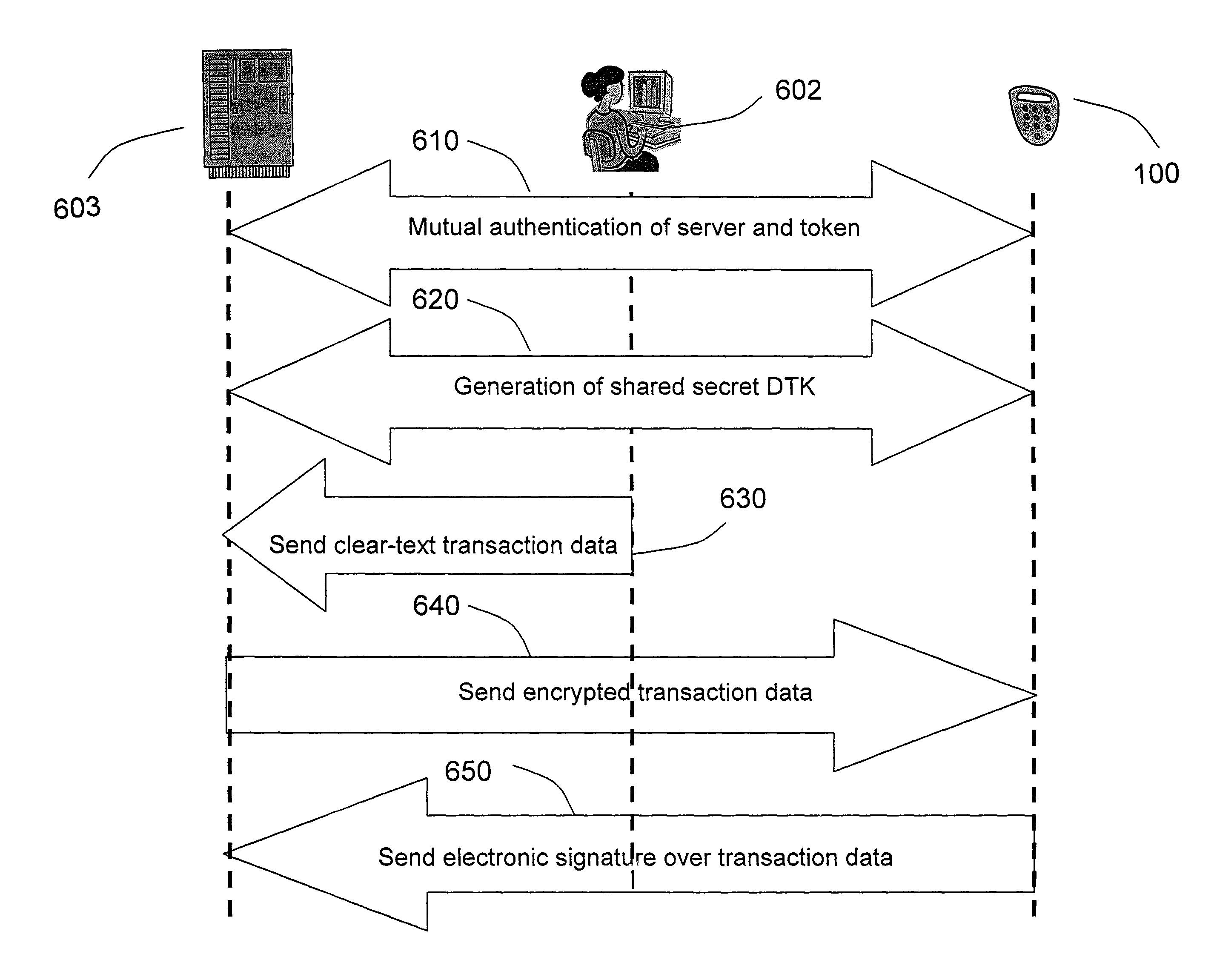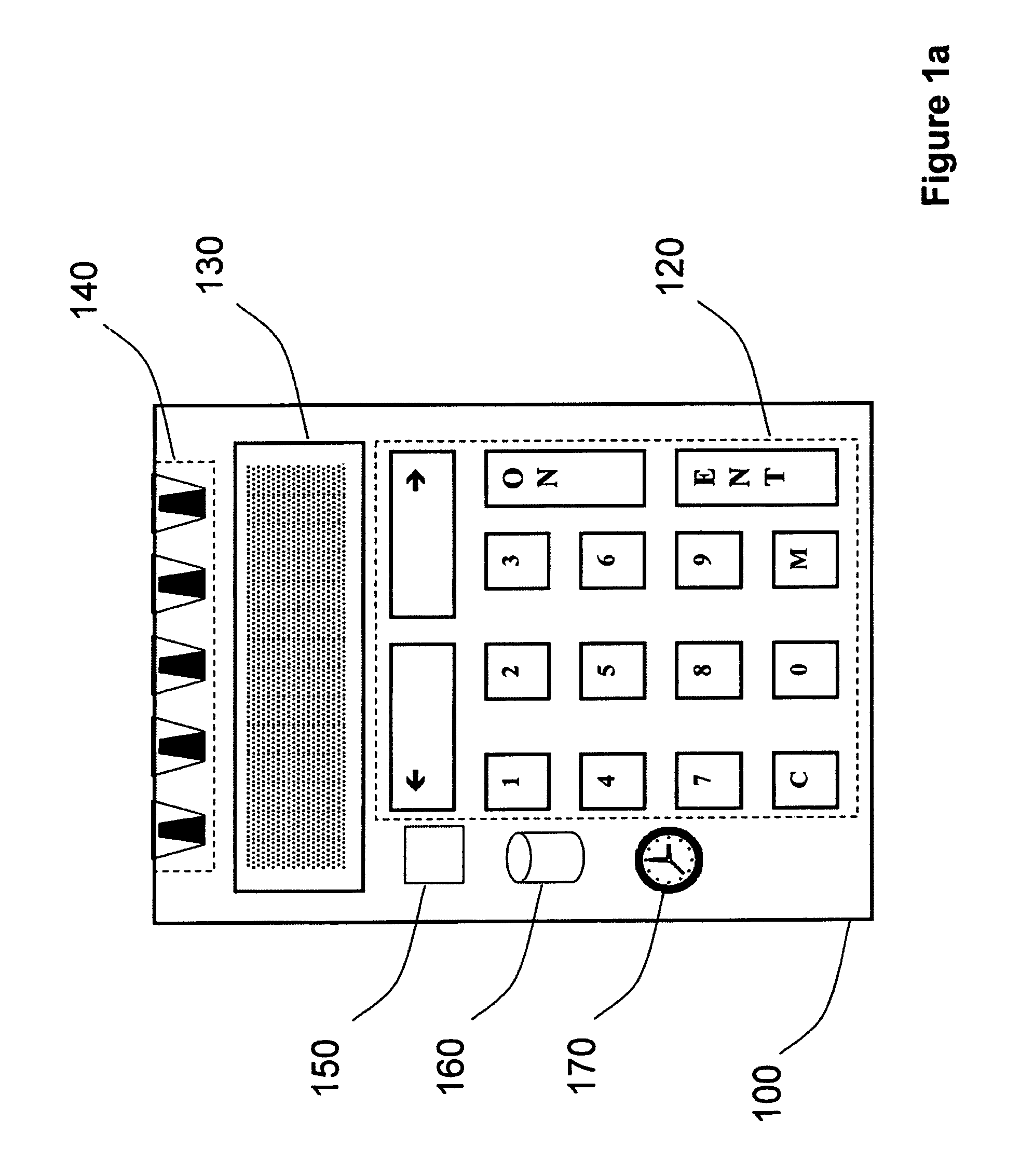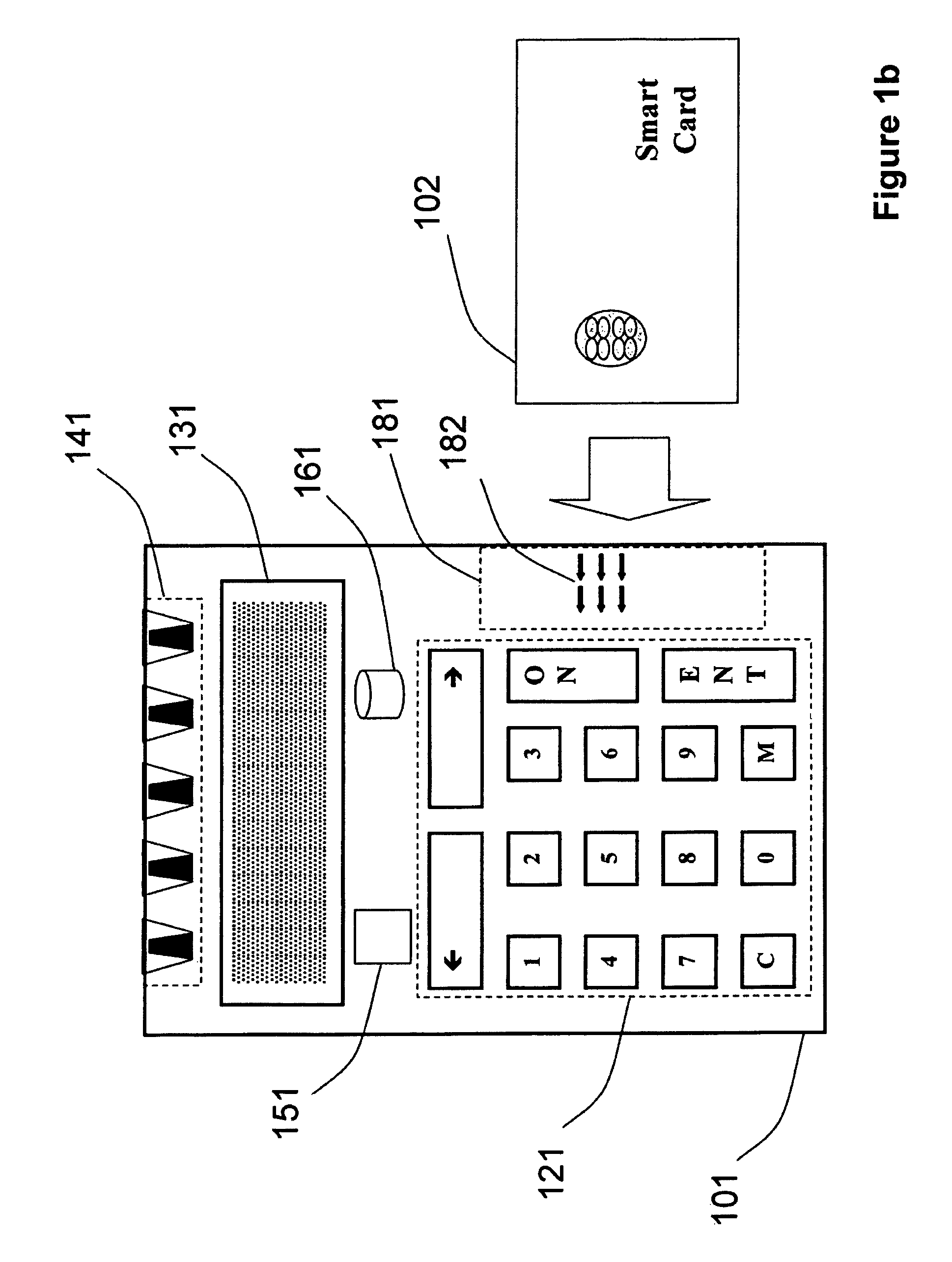Strong authentication token generating one-time passwords and signatures upon server credential verification
a server credential and authentication token technology, applied in the field of strong authentication tokens generating one-time passwords and signatures upon server credential verification, can solve the problems of reducing requiring more advanced security technology, and insufficient static passwords, so as to reduce the transmission size of information, high security and versatility, and reduce the cost
- Summary
- Abstract
- Description
- Claims
- Application Information
AI Technical Summary
Benefits of technology
Problems solved by technology
Method used
Image
Examples
Embodiment Construction
[0060]Some implementations of the present invention are discussed below. While specific implementations are discussed, it should be understood that this is done for illustration purposes only. A person skilled in the relevant art will recognize that other components and configurations may be used without parting from the spirit and scope of the invention.
[0061]FIG. 1a schematically illustrates a typical implementation of the invention consisting of a token (100) for generating security values such as one-time passwords to authenticate a user or transaction signatures to indicate the user's approval of a transaction, comprising:[0062]trustworthy means (130), such as for example a display or audio output means, to communicate information, such as said security values or transaction data to be approved, to the user;[0063]a data input interface, such as a keypad (120) and / or an array of photosensitive elements (140), for receiving server credential information and / or to capture the user...
PUM
 Login to View More
Login to View More Abstract
Description
Claims
Application Information
 Login to View More
Login to View More - R&D
- Intellectual Property
- Life Sciences
- Materials
- Tech Scout
- Unparalleled Data Quality
- Higher Quality Content
- 60% Fewer Hallucinations
Browse by: Latest US Patents, China's latest patents, Technical Efficacy Thesaurus, Application Domain, Technology Topic, Popular Technical Reports.
© 2025 PatSnap. All rights reserved.Legal|Privacy policy|Modern Slavery Act Transparency Statement|Sitemap|About US| Contact US: help@patsnap.com



